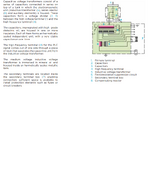Cesme
Electrical
- Jan 29, 2019
- 12
Hello everyone,
During relay testing, we apply voltage to the secondary of the capacitive voltage transformer (CVT). Some colleagues disconnect the secondary terminals going to the field, believing that high voltage may appear on the primary side during the test. However, I think this is unnecessary.
When voltage is applied in reverse, it will rise up to the inductive part and then be divided according to the capacitance ratio.
How do you approach this in your own systems?
During relay testing, we apply voltage to the secondary of the capacitive voltage transformer (CVT). Some colleagues disconnect the secondary terminals going to the field, believing that high voltage may appear on the primary side during the test. However, I think this is unnecessary.
When voltage is applied in reverse, it will rise up to the inductive part and then be divided according to the capacitance ratio.
How do you approach this in your own systems?

